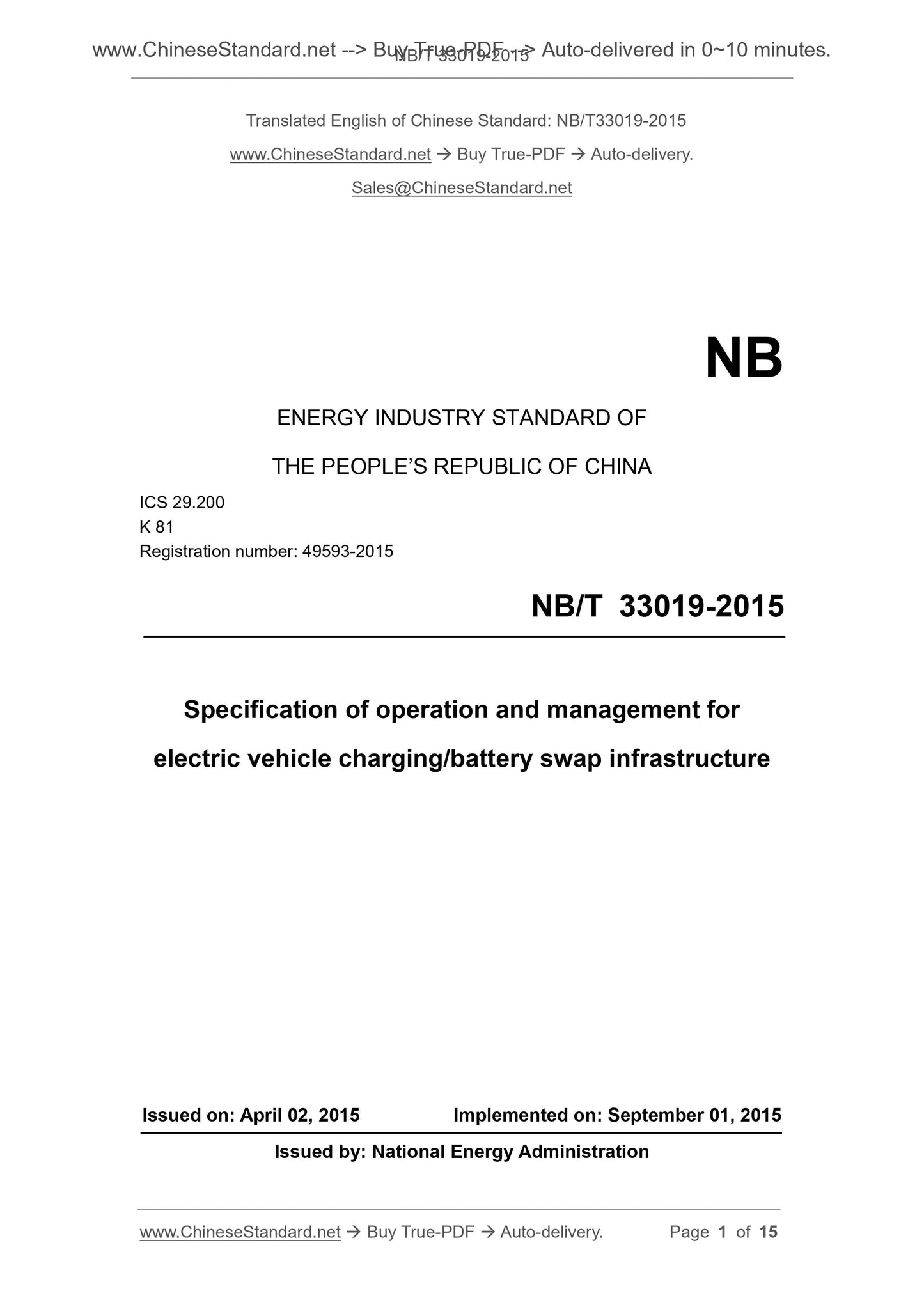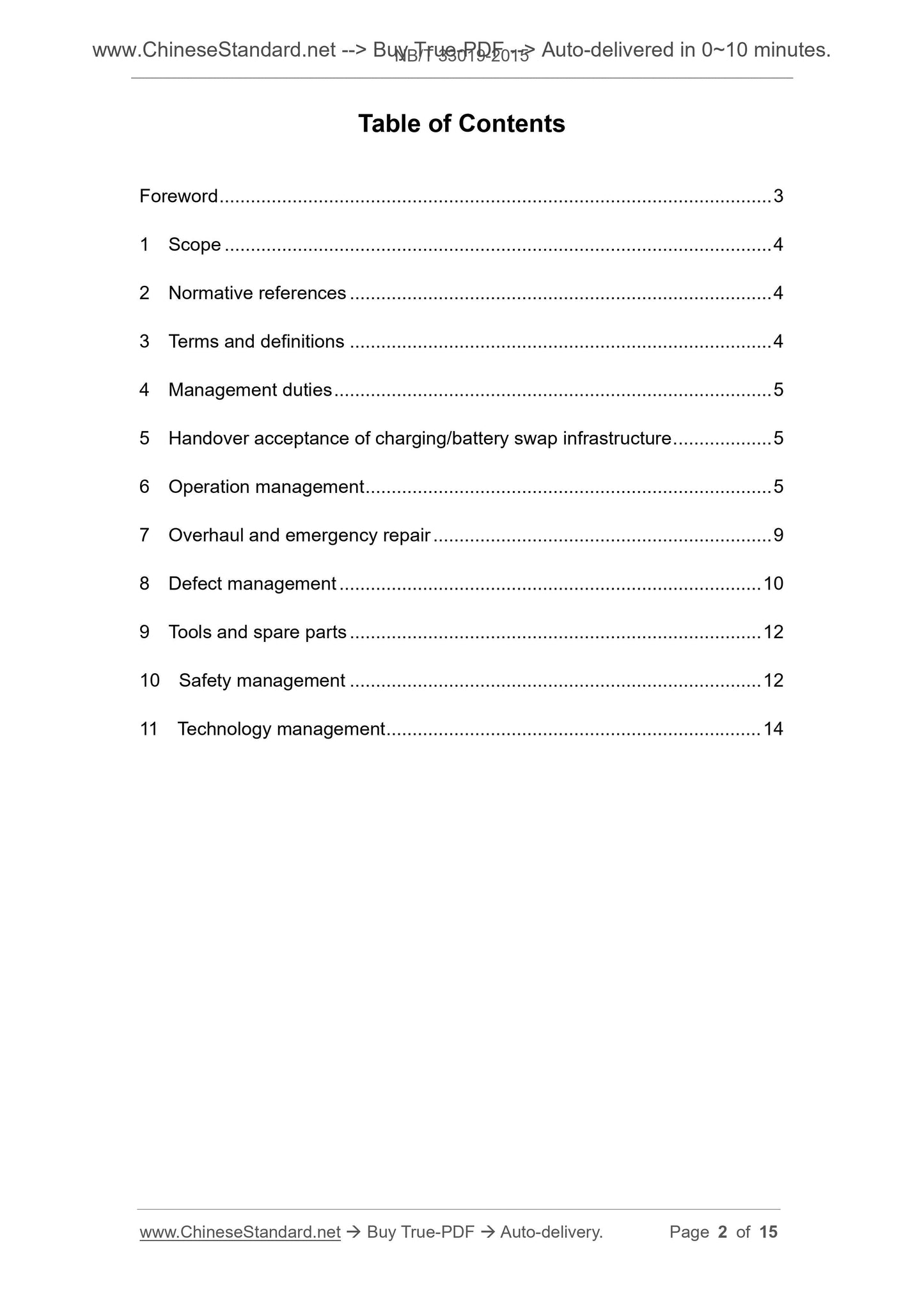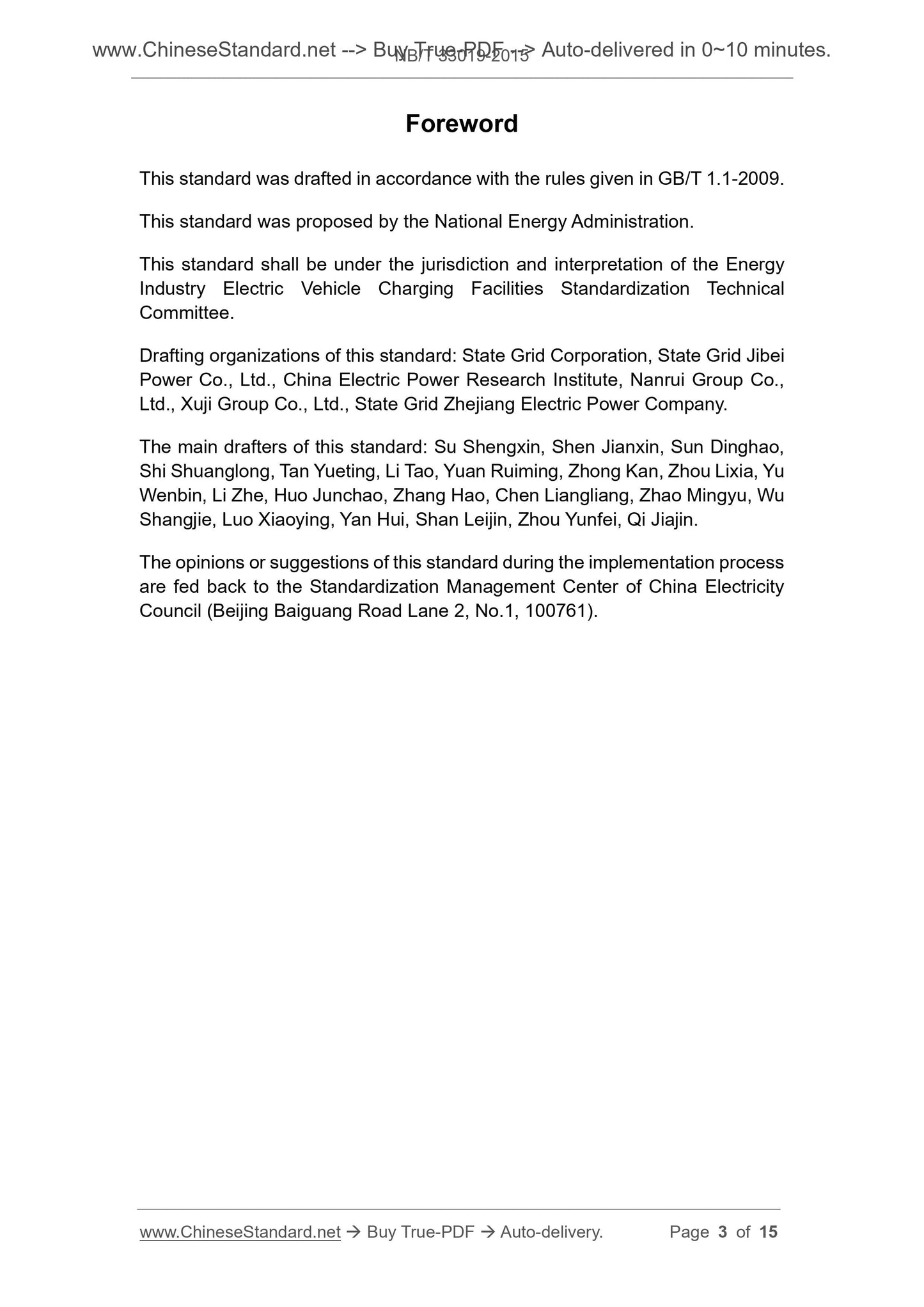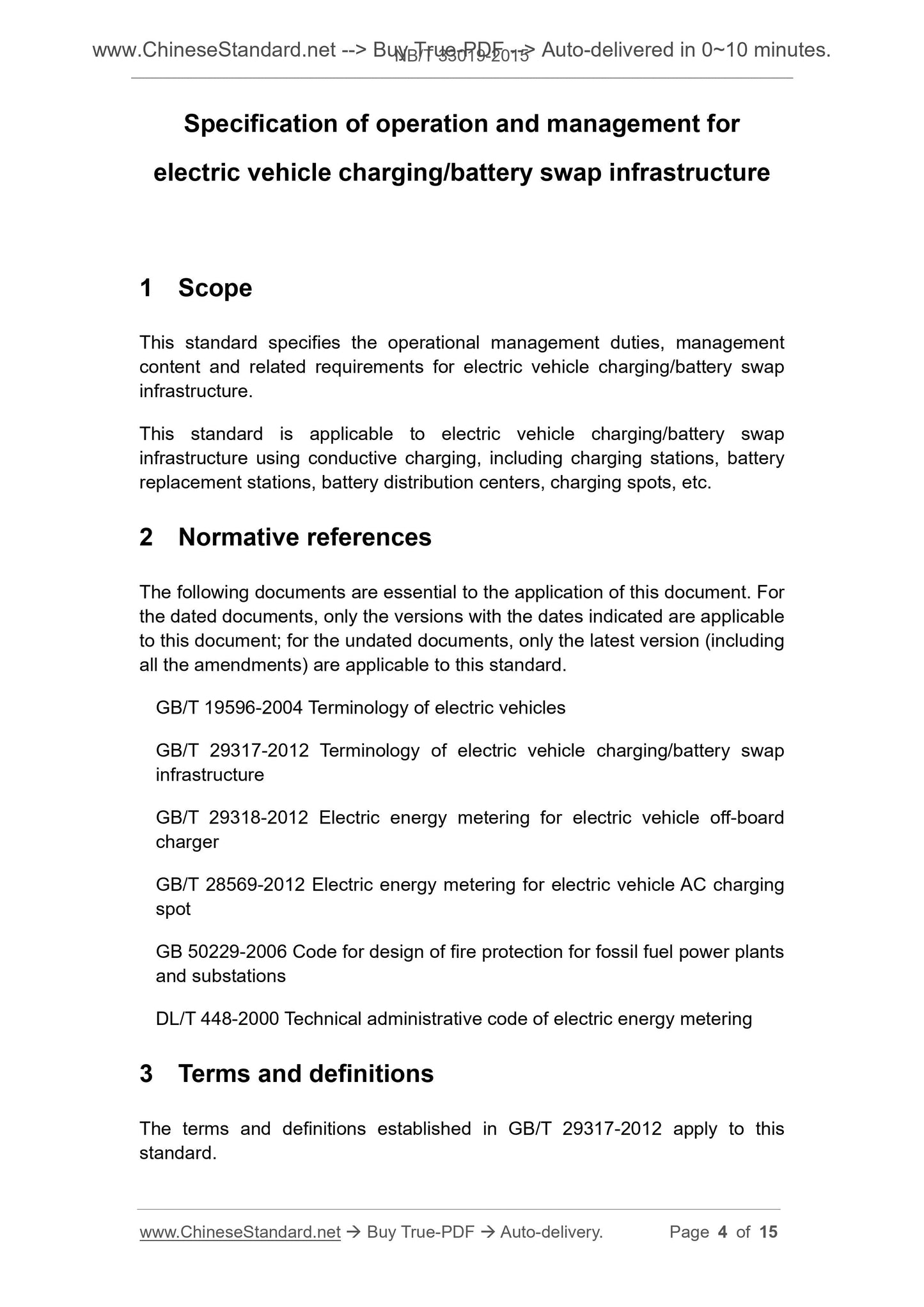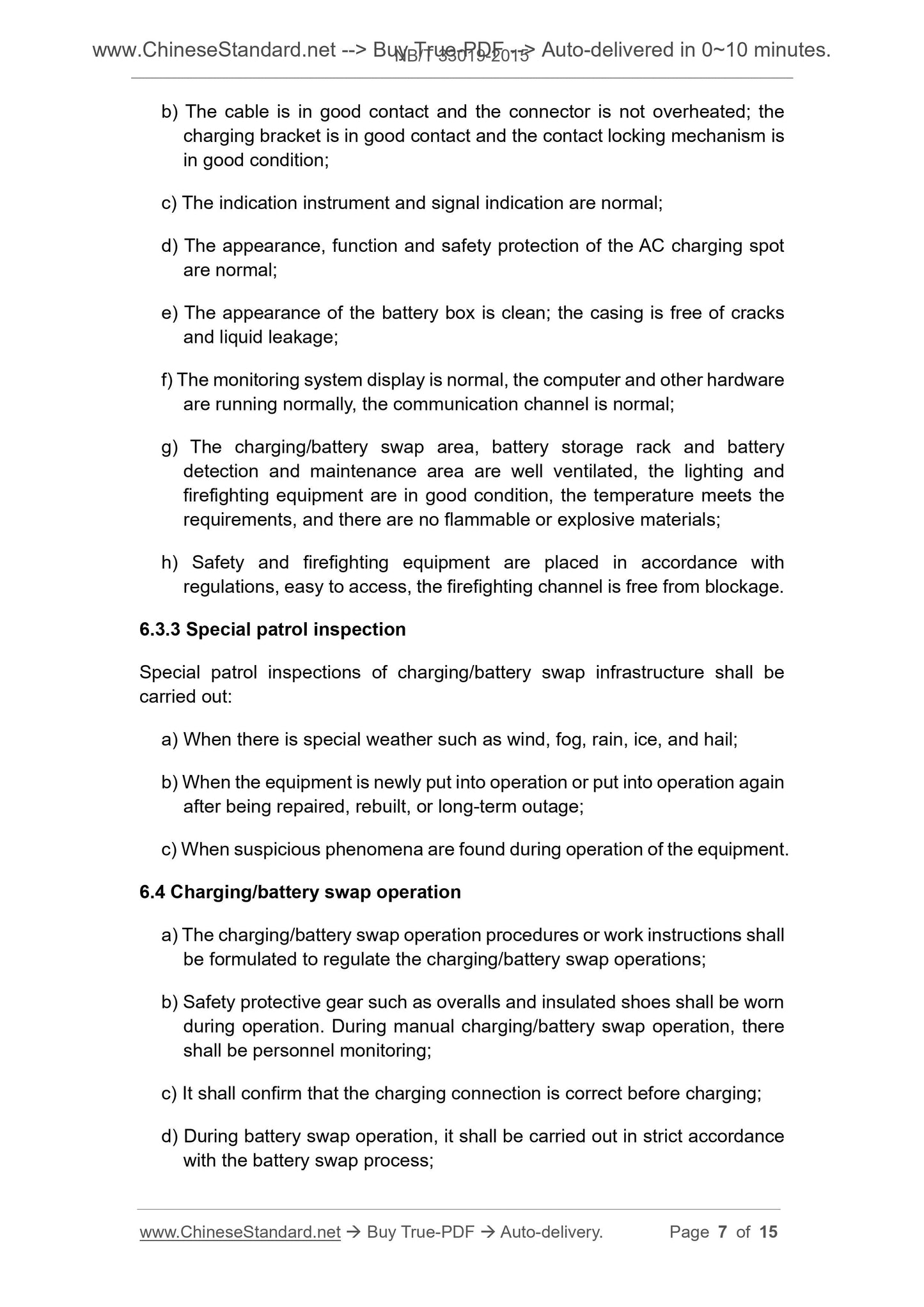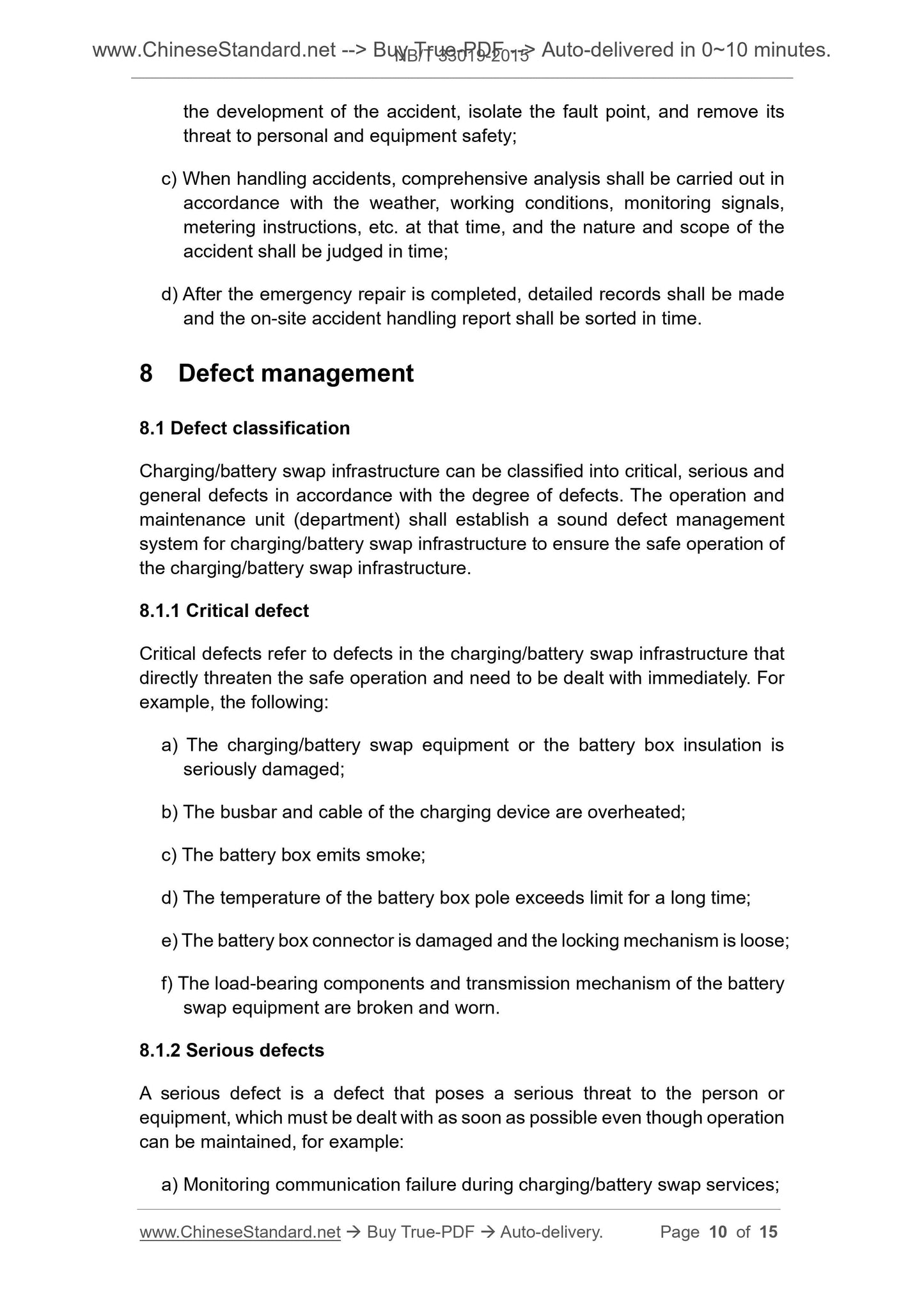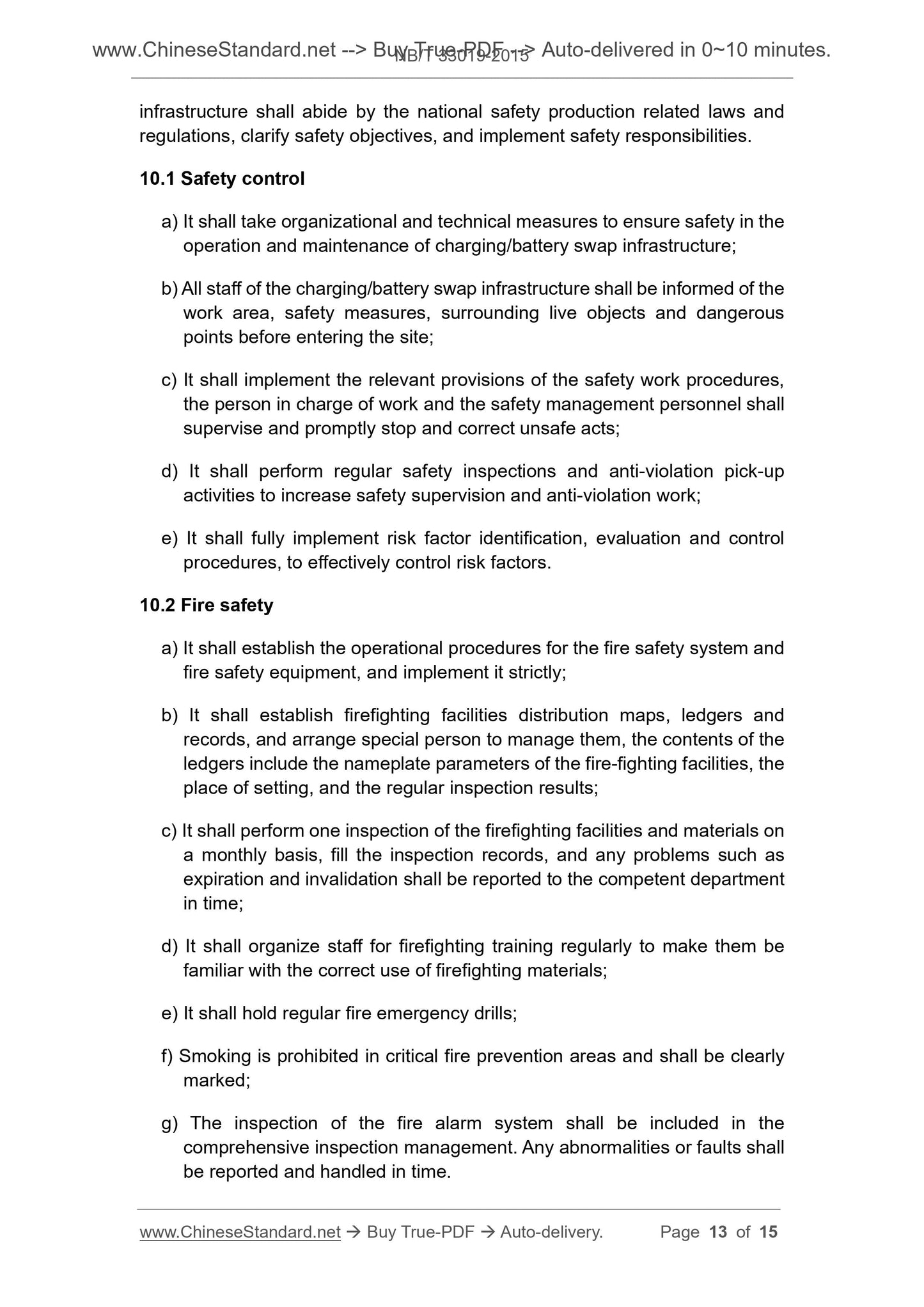1
/
of
7
www.ChineseStandard.us -- Field Test Asia Pte. Ltd.
NB/T 33019-2015 English PDF (NB/T33019-2015)
NB/T 33019-2015 English PDF (NB/T33019-2015)
Regular price
$195.00
Regular price
Sale price
$195.00
Unit price
/
per
Shipping calculated at checkout.
Couldn't load pickup availability
NB/T 33019-2015: Specification of operation and management for electric vehicle charging/battery swap infrastructure
Delivery: 9 seconds. Download (and Email) true-PDF + Invoice.Get Quotation: Click NB/T 33019-2015 (Self-service in 1-minute)
Newer / historical versions: NB/T 33019-2015
Preview True-PDF
Scope
This standard specifies the operational management duties, managementcontent and related requirements for electric vehicle charging/battery swap
infrastructure.
This standard is applicable to electric vehicle charging/battery swap
infrastructure using conductive charging, including charging stations, battery
replacement stations, battery distribution centers, charging spots, etc.
Basic Data
| Standard ID | NB/T 33019-2015 (NB/T33019-2015) |
| Description (Translated English) | Specification of operation and management for electric vehicle charging/battery swap infrastructure |
| Sector / Industry | Energy Industry Standard (Recommended) |
| Classification of Chinese Standard | K81 |
| Classification of International Standard | 29.200 |
| Word Count Estimation | 10,168 |
| Date of Issue | 2015-04-02 |
| Date of Implementation | 2015-09-01 |
| Quoted Standard | GB/T 19596-2004; GB/T 29317-2012; GB/T 29318-2012; GB/T 28569-2012; GB 50229-2006; DL/T 448-2000 |
| Regulation (derived from) | ?Energy Bureau Announcement 2015 No. 3 |
| Issuing agency(ies) | National Energy Administration |
| Summary | This Standard specifies the electric vehicle charging facilities for electric operation and management responsibilities, manage content and requirements. This Standard applies to the use of conductive charging electric vehicle charging facilities for electric, including charging stations, battery replacement stations, distribution centers battery charging pile. |
Share
